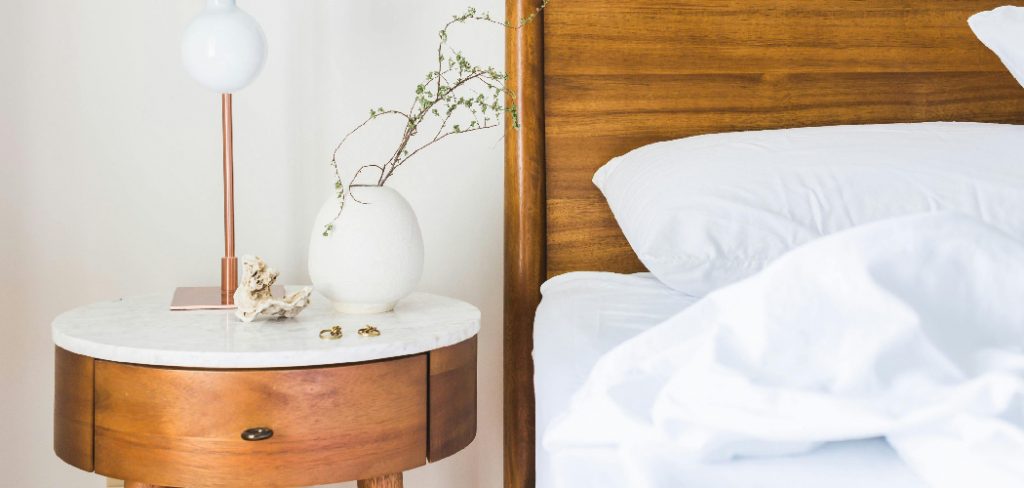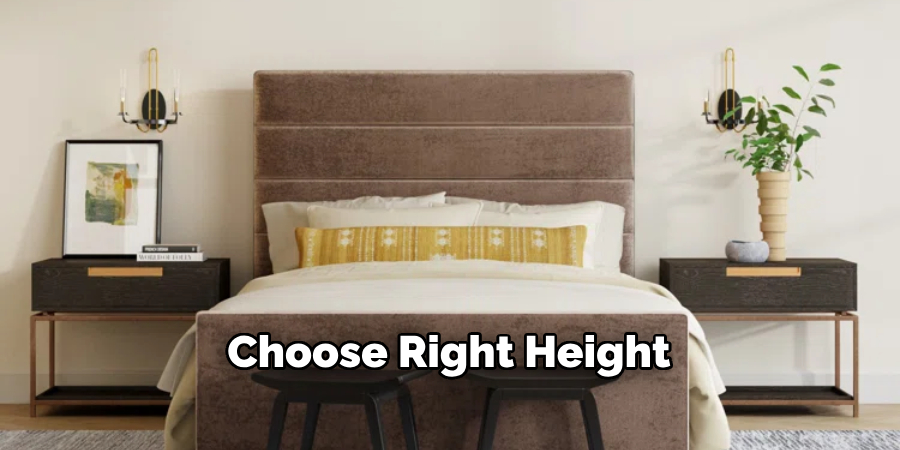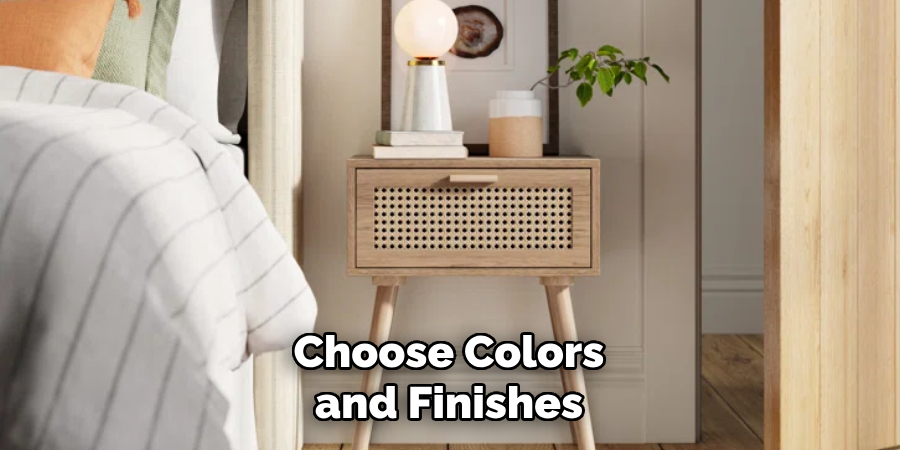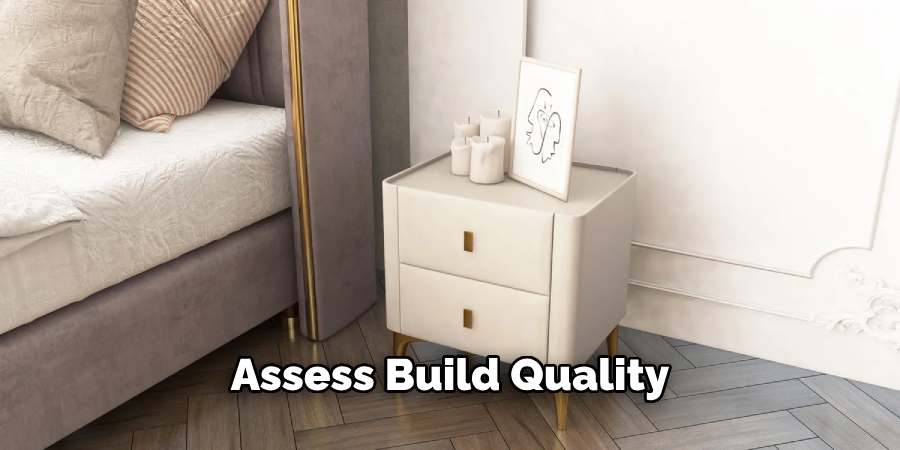A nightstand plays a crucial role in bedroom functionality and decor, acting as a convenient surface for essential items and adding to the space’s overall aesthetic. When choosing the perfect nightstand, several considerations include size, style, storage needs, and material quality.

It’s essential to assess your personal requirements and the existing decor of your bedroom to make an informed choice. This article aims to guide you through the selection process, offering insights on how to choose a nightstand that perfectly fits your needs while enhancing your bedroom’s beauty and functionality. Whether you seek a minimalist design or a more traditional piece, understanding these considerations will help you find the ideal nightstand to complement your home.
Assessing Your Needs
Functionality Requirements
When choosing a nightstand, it’s crucial to identify what you need to store or access from it. Consider essential items such as books, an alarm clock, a lamp, or a phone charger—all of which will influence the design and features of your nightstand. For example, if you enjoy reading before bed, opt for one with sufficient surface space for a book and a glass of water. Additionally, specific functionalities such as drawers for hidden storage or open shelves for easy access to frequently used items should be evaluated, as these will contribute to the nightstand’s practicality.
Lifestyle Considerations
Your daily habits play a significant role in selecting the ideal nightstand. If you have a small bedroom, you might require a compact design that offers extra storage without overwhelming the space. Conversely, if you prefer a minimalist approach, a sleek, simple nightstand with limited surface area may suit your style better. Assessing your lifestyle needs will ensure that the nightstand you choose meets functional requirements and complements your way of living, promoting an organized and serene bedroom environment.
How to Choose a Nightstand: Determining the Right Size
Height and Proportion
Choosing the right height for your nightstand is essential for comfort and accessibility. Ideally, the top of the nightstand should be level with the top of your mattress, allowing for easy reach when you need to access items like a lamp or book. If your mattress is particularly high or low, consider adjusting your choice accordingly to ensure that you don’t have to stretch or lean awkwardly to grasp what you need.

When matching the nightstand’s size to your bed, consider the overall scale of your bedroom. A petite nightstand can look lost next to a large bed, whereas an oversized piece may dominate a small space. Always take measurements to find the perfect balance between your bed’s dimensions and the nightstand’s height.
Width and Depth
When selecting a nightstand, it’s crucial to consider the available space in your bedroom. Measure the area beside your bed to ensure there’s enough room for the nightstand without making the space feel cramped. It’s also important to assess the depth of the nightstand; a deeper piece may provide additional storage but can also overwhelm a small room. Ideally, the width should complement the bed and allow for enough walking space around it, making it easy to move within the room.
Remember to balance the nightstand’s dimensions with the overall room layout to prevent overcrowding and maintain a harmonious flow. A well-chosen nightstand will enhance your bedroom’s functionality and aesthetics without sacrificing comfort and space.
How to Choose a Nightstand: Style and Design
Matching Bedroom Decor
One of the most important aspects of selecting a nightstand is ensuring that its style and design complement your existing bedroom decor. This involves examining the overall aesthetic of your space and choosing a nightstand that harmonizes with your other furniture pieces, textiles, and accessories.
For instance, if your bedroom features a modern look, opt for a nightstand with clean lines and a minimalistic design. On the other hand, a traditional bedroom may benefit from ornate details and classic shapes. Don’t overlook the significance of matching furniture styles, as a well-coordinated room creates a sense of unity and sophistication.
Consider traditional, modern, rustic, or even eclectic elements when exploring various design styles. Each style brings its own character to the space, so think about how a potential nightstand fits into this narrative. For a cozy rustic vibe, choose natural wood finishes that highlight the warmth of the material. Alternatively, a sleek, contemporary nightstand can add a touch of sophistication to a modern bedroom. Ultimately, the right choice will enhance the room’s overall charm while reflecting your personal taste.
Choosing Colors and Finishes
When it comes to selecting colors and finishes for your nightstand, consider how these elements will interact with your bedroom’s color scheme. Opt for shades that harmonize with your current palette, creating a pleasant visual flow. Neutral colors often work well but don’t shy away from bold hues if they resonate with your style. For a softer look, pastel shades can create an inviting atmosphere, while deep, rich colors can add a dramatic flair.

The finish of the nightstand is equally important, impacting both aesthetics and functionality. Painted finishes can offer a pop of color and are perfect for a playful style, while stained or natural wood finishes lend an organic feel to the room. Additionally, consider the durability of different finishes; high-gloss paints might be easier to clean but may show scratches more readily than a matte finish or natural wood. By thoughtfully choosing the colors and finishes, you’ll ensure your nightstand not only fits seamlessly into the bedroom but also enhances its beauty and character.
Material and Construction Quality
The material and construction quality of your nightstand plays a significant role in its longevity and functionality. Various materials offer unique advantages and drawbacks, influencing both the aesthetic appeal and the practicality of the piece. Understanding the distinctions among materials can aid in making an informed decision that aligns with your lifestyle and preferences.
Types of Materials
Wood: Known for its durability and warmth, wood can be either solid or engineered. Solid wood, like oak or maple, is robust but may require more maintenance to prevent scratches. Engineered wood, such as plywood or MDF, is often more budget-friendly, though it may lack the same longevity.
Metal: Metal nightstands, often crafted from steel or aluminum, bring a modern touch and are typically very durable. However, they may be prone to scratches and can be noisy.
Glass: Glass nightstands offer a sleek, contemporary look. While they can create an airy feel, they are more susceptible to breaking and may require regular cleaning.
Composite Materials: These may include a mix of wood and synthetic materials, providing a balance of affordability and style, but they may not offer the same durability as solid wood.
Assessing Build Quality
When evaluating the build quality of a nightstand, look for indicators of excellent construction. Sturdy joints—such as dovetail or mortise-and-tenon joints—are a sign of a well-constructed piece. Smooth finishes are essential for aesthetic appeal and surface integrity. When checking drawers, ensure they glide smoothly and securely fit in their slots.

Storage and Features
Types of Storage
When selecting a nightstand, effective storage solutions are essential for maintaining an organized and functional bedroom. There are various storage options to consider, including drawers, open shelves, and cabinets, each catering to different needs and preferences. Drawers are a popular choice, providing concealed storage for items like books, medications, or personal accessories, keeping the surface clutter-free.
On the other hand, open shelves offer a more accessible display for decorative items or frequently used essentials, allowing for easy reach while adding visual interest to your space. Lastly, cabinets can provide both enclosed storage and a sophisticated look, ideal for those who prefer a tidy aesthetic. Evaluating your storage needs and organizational habits will help determine which option best suits your lifestyle.
Additional Features
In addition to storage options, consider that built-in features can elevate the functionality of your nightstand. Look for models with charging ports that easily power your devices overnight, keeping cords neatly organized. Pull-out trays can serve as extra surface space for drinks or snacks without losing balance.
Adjustable shelves can adapt to changing storage needs, offering flexibility for books, lamps, or decorative accents. Evaluating these additional features in relation to your daily routines and lifestyle ensures you select a nightstand that maximizes convenience and meets your practical needs, making it a valuable addition to your bedroom.
Budget Considerations
Setting a Budget
When purchasing a nightstand, it’s crucial to determine a budget range that aligns with your financial comfort while addressing your style and functional needs. Consider what you’re willing to invest regarding materials, construction quality, and features. Remember that while lower-priced options may appear appealing, they might compromise on durability or aesthetics. Striking a balance between cost and quality is essential to ensure that your nightstand remains valuable to your bedroom for years to come.
Finding the Best Value
To stretch your budget further, shop smart by watching for sales or seasonal promotions, as many retailers offer significant discounts throughout the year. Exploring second-hand options like thrift stores or online marketplaces can yield unique and affordable finds. Additionally, consider items that may require a bit of touch-up, like refinishing or repainting, which can elevate their appeal without significantly impacting your budget.

Conclusion
In summary, when learning how to choose a nightstand, there are several key factors to keep in mind, including material and construction quality, storage options, and additional features that enhance functionality. Consider the types of materials that best fit your aesthetic, evaluate the build quality for long-term use, and choose storage solutions that align with your organizational needs.
Additionally, remember to set a reasonable budget and seek the best value for your investment, ensuring that your nightstand is both stylish and practical. Taking the time to thoroughly assess your choices and preferences will lead you to the perfect nightstand that complements your bedroom’s character while meeting your everyday needs. A thoughtfully selected nightstand can truly transform your space into a serene and organized retreat.
About the Author
Adrian Green, a lifelong woodworking enthusiast, shares his passion for the craft through The Woodenify Blog. With a foundation built on years of hands-on experience in his father’s woodworking shop, Adrian is dedicated to helping others learn and grow in the world of DIY woodworking. His approach to woodworking combines creativity, practicality, and a deep appreciation for the art of building with your own hands. Through his blog, he inspires individuals of all skill levels to embark on their own woodworking journeys, creating beautiful, functional pieces of furniture and décor.
Professional Focus
- Specializes in DIY woodworking projects, from furniture to home décor.
- Provides step-by-step guides and practical tutorials for woodworkers of all skill levels.
- Dedicated to helping readers build confidence and skill through easy-to-follow instructions and tips.
- Passionate about fostering a community of makers who can share, learn, and grow together.
Education History
- University of Craft and Design – Bachelor of Fine Arts (BFA) in Woodworking and Furniture Design
- Woodworking Apprenticeships – Extensive hands-on training with skilled craftsmen to refine carpentry and furniture making techniques.
- Online Courses & Masterclasses – Continued education in advanced woodworking techniques, design principles, and specialized tools
Expertise:
- DIY woodworking, carpentry, furniture making, and home décor projects.
- Creating accessible tutorials and guides for beginner to advanced woodworkers.
- Sharing the joys and satisfaction of woodworking, from raw materials to finished products.
